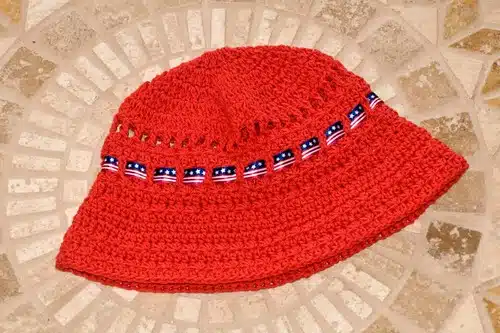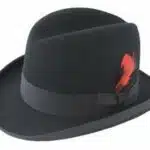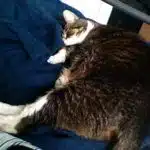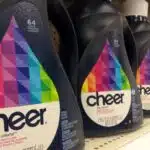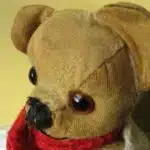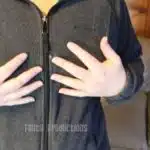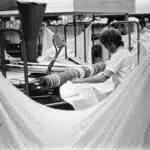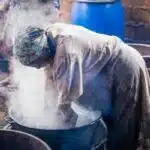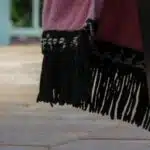Knit or crochet hats are an essential part of winter fashion, providing warmth and style to any outfit. However, these accessories require proper care and maintenance to ensure their longevity. Washing a knit or crochet hat may seem like a daunting task, especially for those who are new to the world of handcrafted items. Nevertheless, with the right techniques and tools, cleaning a knit or crochet hat can be a breeze.
As an expert in knitwear and crochet accessories, I have encountered numerous instances where individuals have struggled with washing their hats properly. Over time, improper washing methods can damage the fabric, causing it to lose its shape and texture. In this article, I will provide comprehensive instructions on how to wash your knit or crochet hat effectively without compromising its quality. With these tips, you can keep your beloved hat clean and cozy throughout the winter season.
Understanding The Importance Of Proper Hat Care
Proper hat care is essential to maintain its quality and increase its lifespan. Neglecting hat hygiene can lead to the accumulation of dirt, sweat, and oils, which can cause unpleasant odors and damage the fibers of the hat. It is important to clean your knit or crochet hats regularly to keep them fresh and in good condition.
Using specialized hat cleaners can provide many benefits for your hats. These cleaners are formulated specifically for delicate fibers like wool, cashmere, alpaca, and silk that are commonly used in knitting or crocheting hats. They are designed to remove dirt and grime while preserving the natural oils of the fibers that help keep them soft and supple. Additionally, these cleaners are gentle on the environment compared to traditional laundry detergents.
Taking proper care of your hats not only benefits you but also those around you. Wearing a dirty or smelly hat can be unpleasant for others who come into contact with it. Moreover, regular cleaning prevents bacteria growth which can cause infections and ailments that spread quickly in communal areas such as schools, public transportations, workplaces, hospitals among others. It is therefore crucial to identify the materials of your hat before proceeding with cleaning it.
Identifying The Materials Of Your Hat
- Synthetic materials used in knit and crochet hats include acrylic, nylon, and polyester fibers.
- Natural fibers used in knit and crochet hats include wool, cotton, mohair, and alpaca.
- Yarn used for knit and crochet hats can be categorized into two main types: worsted weight and bulky weight.
- Worsted weight yarn is lightweight and suitable for complicated stitch patterns and detailed designs.
- Bulky weight yarn is thicker and can be used to create a sturdier, thicker hat.
- The type of yarn used for a hat project should be chosen based on the desired outcome for the hat.
Synthetic Fibers
As a knitwear and crochet accessories expert, it is important to identify the materials of your hat in order to provide proper care instructions. Synthetic fibers are commonly used in hat making due to their durability and affordability. However, they require specific cleaning techniques to prevent damage.
To clean a synthetic fiber hat, first check the care label for any specific instructions. If there are none, fill a sink or basin with lukewarm water and add a small amount of mild detergent. Gently swirl the hat in the water, being careful not to agitate it too much as this can cause stretching or distortion. Rinse thoroughly with cool water and gently squeeze out excess moisture.
Drying methods for synthetic fiber hats should avoid high heat as this can cause melting or warping. Instead, lay the hat flat on a clean towel and reshape it to its original size and shape. Allow it to air dry completely before wearing again. Following these simple cleaning and drying techniques will help ensure your synthetic fiber hat lasts for many seasons to come.
Natural Fibers
As a knitwear and crochet accessories expert, it is important to consider the materials used in creating hats. Choosing sustainable fibers like natural materials is a great way to reduce our impact on the environment. Unlike synthetic materials, natural fibers are biodegradable and do not contribute to the buildup of microplastics in our oceans.
When identifying the materials of your hat, look for labels that indicate natural fibers such as wool, cotton, or silk. These materials require special care instructions to ensure their longevity. For example, wool should be hand washed with cool water and mild detergent to prevent shrinking and felting.
Avoiding synthetic materials in favor of natural fibers not only benefits the environment but also produces high-quality hats that are durable and long-lasting. As a knitwear and crochet accessories expert, it is important to educate customers on the benefits of choosing sustainable fibers for their hats and providing them with proper care instructions to keep their hats looking beautiful for years to come.
Types Of Yarn
Identifying the materials used in creating hats is an essential aspect of producing high-quality knitwear and crochet accessories. As a knitwear and crochet accessories expert, it is crucial to consider the type of yarn used in making hats. Natural versus synthetic fibers are critical factors to consider when choosing the right yarn for your hat.
Natural fibers such as wool, cotton, or silk are excellent choices for hats as they are more sustainable than synthetic materials. They are biodegradable and do not contribute to the build-up of microplastics in our oceans. These types of yarn also produce durable and long-lasting hats that can withstand daily wear and tear. On the other hand, synthetic fibers may not be as durable as natural fibers; hence they may require frequent replacing.
Choosing the right yarn for your hat depends on several factors such as its purpose, season, color, texture, and pattern. For instance, wool is an excellent choice for winter hats because it provides warmth. Cotton or linen is suitable for summer hats because they are breathable and lightweight. Texture also plays a role in determining the type of yarn to use in making a hat; fuzzy or bulky yarn creates a different look from smooth or thin yarns. As a knitwear and crochet accessories expert, it is vital to educate customers on these factors so that they can make informed decisions when selecting yarn for their hats.
Preparing Your Hat For Washing
Having identified the materials of your hat, it is now time to prepare it for washing. Understanding hat materials is crucial in order to avoid damaging the hat during the washing process. Knit and crochet hats are typically made from wool, acrylic, or a blend of both. Wool can be sensitive to changes in temperature and agitation, while acrylic is generally more durable. Knowing the material of your hat will help you decide on the appropriate method of cleaning.
Before washing your knit or crochet hat, it is important to pre-treat any stains. This involves spot-cleaning using a mild detergent or stain remover. Always test any products on an inconspicuous area first before applying to the stain directly. For oily stains such as makeup or food grease, sprinkle some baby powder onto the affected area and let it sit for a few hours before brushing off gently with a soft-bristled brush.
Choosing the right detergent is also essential in maintaining your knit or crochet hats’ quality and prolonging its lifespan. Opt for a gentle detergent that is specifically formulated for delicate fabrics such as wool or cashmere. Avoid using fabric softeners or bleach as they can cause damage to the fibers of your hat. After selecting a suitable detergent, follow the manufacturer’s instructions on how much product to use and what temperature settings are appropriate for your machine wash cycle.
Transition: Now that we have pre-treated our hat and selected an appropriate detergent, let us move on to how we can properly wash our knit or crochet hats without causing any damage.
Choosing The Right Detergent
When it comes to choosing the right detergent for your knit or crochet hat, it’s important to consider a few key factors. First and foremost, you want to choose a detergent that is gentle on delicate fibers and won’t cause any damage or shrinkage. Additionally, it’s important to consider the environmental impact of your chosen detergent and opt for eco-friendly options whenever possible.
One of the main things to avoid when choosing a detergent for your hat is harsh chemicals. These can be damaging not only to the fibers of your hat but also to your skin if you happen to be sensitive. Look for detergents that are labeled as “gentle” or “sensitive” and avoid those with strong fragrances or added dyes.
Finally, when selecting an eco-friendly detergent option, look for those made from natural ingredients such as plant-based oils and extracts. These types of detergents are not only better for the environment but also tend to be gentler on delicate fabrics like wool or cashmere. By making a conscious effort to choose eco-friendly options and avoiding harsh chemicals, you can help ensure that your knit or crochet hat stays in great condition for years to come.
Transition: Now that you have selected an appropriate detergent option for washing your hat, let’s move onto the next step – washing by hand.
Washing Your Hat By Hand
To properly wash a knit or crochet hat, the necessary supplies must be gathered, which include a mild detergent, a clean sink, and a soft brush.
Before washing the hat, it should be examined for loose stitches or yarn.
Once any loose threads have been removed, the hat should be placed in the sink, and a small amount of detergent should be added to the water.
Gently brush the hat in the water, taking care to ensure the water is not too hot or too cold.
Carefully rinse the hat with cold water until all of the soap is removed.
Finally, the hat should be left to air dry on a clean towel.
Gather Supplies
To ensure that your knit or crochet hat is properly cleaned, it is essential to gather the necessary supplies. Choosing the right detergent for your hat can make all the difference in maintaining its quality and longevity. It is advisable to use a mild detergent that is free of harsh chemicals and fragrances, as these ingredients can damage delicate fibers over time. In addition, finding alternatives such as wool wash or baby shampoo can be gentler on your hat and help preserve its shape.
Aside from choosing the right detergent, you will also need a basin or sink filled with lukewarm water. Avoid using hot water, as this can cause shrinkage or felting in some types of yarn. It is also helpful to have a clean towel nearby for drying your hat after washing. If you have any stains on your hat, it may be necessary to use a stain remover before beginning the washing process.
Overall, gathering supplies for hand-washing your knit or crochet hat involves selecting a gentle detergent and finding alternatives if needed, preparing a basin of lukewarm water, and having a clean towel on hand for drying. By taking these steps before beginning the washing process, you can ensure that your hat will be properly cared for and maintain its quality over time.
Prepare Hat
Proper grooming of hats is necessary to keep them looking their best. Before washing your hat by hand, it is important to prepare it properly. This involves taking the time to examine the hat for any signs of wear and tear, such as holes or loose threads. These should be repaired before washing, as they can become worse if left untreated.
In addition to repairing any damage, you should also choose accessories that are appropriate for hand-washing. This may include a wire hat form or a plastic shower cap to help protect the hat’s shape during washing. You may also want to consider using a fabric softener or conditioner specifically designed for wool or other delicate fibers, as this can help maintain the hat’s softness and prevent static buildup.
Finally, it is important to take care when washing your hat by hand. Avoid scrubbing too vigorously or twisting the hat excessively, as this can cause damage to the delicate fibers. Instead, use gentle circular motions and be sure to rinse thoroughly with lukewarm water. Once the hat has been washed and rinsed, gently reshape it on a clean towel and allow it to air dry completely before wearing again.
By following these steps for preparing your hat before washing by hand, you can ensure that it remains in excellent condition for years to come. With proper care and attention, your favorite knit or crochet hats can continue to provide warmth and style throughout many seasons of wear.
Wash Hat
When it comes to washing your hat by hand, taking the proper steps can make a significant difference in its longevity and overall appearance. One of the first things to consider is how to prevent shrinkage during the washing process. This can be achieved by using lukewarm water and avoiding hot temperatures, which can cause wool or other fibers to shrink. Additionally, you should avoid using harsh detergents or bleach, which can damage delicate fibers and cause discoloration.
If your hat has stubborn stains that are difficult to remove, there are a few tricks you can try before resorting to washing it by hand. For instance, you may want to spot clean the affected area with a gentle stain remover or vinegar solution. Alternatively, placing the hat in direct sunlight for several hours can also help to lighten and remove stains over time.
When it is time to wash your hat by hand, be sure to follow the appropriate steps carefully. This includes using a gentle circular motion when washing and avoiding excessive twisting or scrubbing that could damage the fibers. Once washed and rinsed thoroughly, gently reshape the hat on a clean towel and air dry completely before wearing again. By taking these precautions and following these steps for washing your hat by hand, you can maintain its quality and beauty for years to come.
Washing Your Hat In The Washing Machine
When it comes to washing your knitted or crocheted hat, there are certain precautions you should take if you plan on using a washing machine. Before placing your hat in the machine, ensure that it is not too delicate and can withstand being thrown around in the wash. Additionally, check that it is not prone to shrinking or losing its shape.
To avoid damaging your hat, use the gentlest cycle on your machine and a mild detergent. Avoid using bleach or fabric softeners as they may cause discoloration or damage to the fibers of your hat. Furthermore, ensure that you do not overload the machine as this may lead to tangling and stretching of your hat.
Although washing machines can be convenient, it’s important to note that handwashing still remains the safest alternative for knitwear accessories like hats. If you’re unsure about how to safely clean your hat in a washing machine, opt for handwashing instead. In our next section, we’ll discuss how to properly handwash your knit or crochet hat so that it stays looking great for years to come.
Transition: Now that you know how to wash your knit or crochet hat in a washing machine let’s move onto drying it properly without causing any damage.
Drying Your Hat
- Air drying is the most recommended method for drying a knit or crochet hat, as it helps to preserve the shape and structure of the hat.
- To air dry a hat, it is best to lay it flat, as this prevents stretching and warping of the fabric.
- If air drying is not possible, the use of a dryer on the lowest heat setting is acceptable, but it is important to use dryer balls to help prevent the fabric from becoming stretched and distorted.
- Dryer balls are made of rubber or synthetic materials, and can be used in the dryer to prevent tangling and clumping of the fabric.
- They also help to reduce the amount of time needed to dry the hat, as they act as a cushioning layer between the hat and the dryer walls.
- When using dryer balls, it is important to remember to check the hat regularly and remove it immediately once it is dry to avoid over-drying and damage to the hat.
Air Drying
Air drying is an important step in the hat washing process. It is vital to choose the right method so that your knit or crochet hat comes out looking its best. When it comes to air drying, there are two primary methods: hanging and flat.
If you choose to hang your hat, make sure that you use a clothespin or another type of hanger that won’t leave marks on the fabric. Hanging your hat can help prevent shrinking and maintain its shape. However, if you have a very heavy or bulky hat, it may not be able to support its weight when hung. In this case, laying it flat is recommended.
When air-drying your knit or crochet hat, there are some tips you should keep in mind for quick and efficient drying. First, avoid placing your hat in direct sunlight as this can cause fading and damage to the fabric. Second, turn your hat inside out before drying to help it dry faster and prevent any color bleeding. Lastly, try using materials such as a towel or sweater rack for optimal airflow during the drying process.
In conclusion, air-drying is an essential part of washing a knit or crochet hat. By choosing the correct method of hanging vs. flat and utilizing these tips for quick drying while preventing shrinking, you can ensure that your hats stay looking great for years to come!
Lay Flat
When it comes to air-drying your knit or crochet hat, the method of laying it flat is an excellent option. This drying technique is also known as blocking, which involves reshaping and smoothing out the fabric to maintain its original size and shape. Laying your hat flat on a towel or mesh drying rack allows for even distribution of air and weight, preventing any stretching or distortion.
To properly lay your hat flat for drying, gently reshape it into its original form while still damp. Then, place it on a clean and dry towel or mesh drying rack in a well-ventilated area away from direct sunlight. Avoid placing any heavy objects on top of the hat as this can cause deformation during the drying process.
One advantage of using the laying flat method for drying your hat is that it is suitable for all types of knitwear and crochet accessories. This technique is especially useful when dealing with hats made from delicate materials like mohair or cashmere. By employing these blocking techniques and proper drying methods, you can ensure that your knit or crochet hats retain their unique shape while looking pristine for years to come.
Dryer Balls
When it comes to drying your knit or crochet hat, using a dryer may seem like the quickest solution. However, the heat and tumbling motion of the dryer can cause damage and shrinkage to your hat, especially if it is made from delicate materials like wool or cashmere. Fortunately, there is an alternative solution that is gentle on your knitwear while speeding up the drying process: using wool dryer balls.
Using dryer balls made from natural wool fibers has many benefits when drying your knit or crochet hats. These balls work by separating and fluffing up the fabric during the drying cycle, reducing static cling, and shortening drying time by up to 25%. Since they are made from 100% natural wool, they are also hypoallergenic and chemical-free, making them a more eco-friendly option compared to traditional fabric softeners.
To use dryer balls when drying your hat, simply toss in two to four balls into your dryer along with your damp hat. You can also add a few drops of essential oils onto the balls for a fresh scent without any artificial fragrances. Once finished, remove the hat promptly from the dryer and reshape it as needed before laying it flat to rest for a final touch-up dry. With these simple steps and incorporating wool dryer balls into your laundry routine, you can protect your knitwear accessories while still achieving quick and efficient results.
Avoiding Common Mistakes
As a knitwear and crochet accessories expert, I have seen many common mistakes made when washing hats. These mistakes can lead to damaging the hat and ruining its appearance. To avoid these mistakes, there are several tips beginners should follow.
Firstly, do not use hot water or harsh detergents. Hot water and harsh detergents can cause the fibers in the hat to break down and become misshapen over time. Instead, use lukewarm water and a mild detergent specifically designed for delicate fabrics.
Secondly, do not wring or twist the hat when removing excess water. Doing so can stretch and distort the shape of the hat. Instead, gently squeeze out any excess water by pressing the hat against a towel.
Lastly, do not dry the hat in direct sunlight or with high heat. Sunlight and high heat can cause fading, shrinkage, and damage to the fibers of the hat. To dry your hat properly, lay it flat on a clean towel or drying rack away from direct sunlight or heat sources.
By following these simple tips for beginners, you can ensure that your knit or crochet hats stay looking their best for years to come without any damage or loss of quality.
Moving onto dealing with stains and odors, there are several effective techniques that you should know in order to properly care for your hats.
Dealing With Stains And Odors
One of the most frustrating things about washing knit or crochet hats is dealing with tough stains. However, it is important to address these stains as soon as possible to avoid them setting in permanently. For example, if you notice a coffee stain on your favorite knit beanie, do not wait until laundry day to try to remove it. Instead, treat the stain immediately by blotting it with a damp cloth and applying a gentle soap solution. Be sure to rinse thoroughly and air dry the hat before wearing again.
Another common issue when washing knit or crochet hats is unpleasant odors that can linger even after washing. Fortunately, there are natural odor eliminators that can help freshen up your hat without harsh chemicals or artificial fragrances. One option is to use baking soda – simply sprinkle some on the inside of the hat and let it sit overnight before shaking out any excess powder. You can also try placing a few drops of essential oils such as lavender or eucalyptus on a cotton ball and tucking it inside the hat for a refreshing scent.
In summary, when washing knit or crochet hats, it is important to address tough stains promptly and consider using natural odor eliminators for freshness. By taking care of your hats in this way, they will not only look better but also last longer. In the next section, we will discuss effective ways of removing pet hair and lint from your knitwear accessories.
Removing Pet Hair And Lint
- Pet hair can be difficult to remove from knit or crochet hats, but it is possible with the right techniques.
- Lint can be removed from knitted or crocheted hats by a process of vacuuming, brushing, and washing.
- Vacuuming is the most effective and efficient method of removing pet hair, as it can quickly remove large amounts of hair from the surface of the hat.
- Brushing is a more time-consuming method of lint removal, but is useful for removing stubborn lint and pet hair from the fibers of the fabric.
Removing Pet Hair
Removing pet hair from knit or crochet accessories can be a tricky task for many pet owners. However, there are simple techniques that you can use to get rid of those stubborn hairs. One of the most effective ways is to use a lint roller. This tool is designed to pick up and remove any loose hairs from your hat quickly and easily. Simply roll the lint roller over the surface of your hat in a back-and-forth motion until all the hair has been removed.
If you prefer not to use a lint roller, another option is to air dry your knit or crochet hat outside. Exposure to fresh air and sunlight can help loosen and remove any pet hair that may be clinging onto the surface of your accessory. Hang your hat on a clothesline or hanger outside for a few hours, ensuring that it’s secure enough so that it doesn’t fall off with strong winds.
It’s essential to take proper care of your knit or crochet accessories, especially when dealing with pet hair and lint removal. By using these simple techniques such as using a lint roller or air drying techniques, you can keep your hats free from pesky pet hairs while also prolonging their lifespan. Remember always to read care instructions before washing your knit or crochet hats as some materials require more delicate handling than others.
Lint Removal
Removing pet hair and lint from knit or crochet accessories is a common concern among pet owners. While pet hair can be easily removed using a lint roller, lint removal requires a different approach. One effective method is to use a fabric shaver, which gently removes any pilling or fuzz that may have accumulated on the surface of your accessory. Simply run the shaver over the fabric in a back-and-forth motion, taking care not to apply too much pressure.
Another way to remove lint is by using adhesive tape. Wrap a piece of tape around your hand with the sticky side facing out and pat it gently over your hat’s surface to pick up any loose lint or debris. Repeat this process until all visible lint has been removed. For stubborn lint, you can also try using a soft-bristled brush to dislodge any particles.
It’s important to note that proper care and maintenance of knit or crochet accessories can help prevent lint buildup in the first place. Avoid washing your hats too frequently as this can cause excess friction and damage to the fibers, leading to more pilling and shedding. Instead, opt for spot cleaning with a damp cloth as needed, or hand wash with mild detergent when necessary. By incorporating these simple techniques into your regular hat care routine, you can keep your accessories looking fresh and new for years to come.
Storing Your Hat Properly
As we bid adieu to the section on removing pet hair and lint from your knit or crochet hat, it is time to move on to the next important aspect of hat care – storing it properly. Whether you are a fashion enthusiast who loves collecting hats or someone who enjoys wearing them for warmth, storing your hat correctly is imperative for its longevity. A well-stored hat can retain its shape, color, and texture for years to come.
When it comes to storing options, there are several ways you can keep your hat safe and sound when not in use. One of the most common methods is hanging the hat on a hook or peg. However, this method can cause your hat’s shape to distort over time if not hung correctly. Another option is placing your hat in a box or drawer that is free of moisture and direct sunlight. You can also stuff your hat with tissue paper to help maintain its shape while stored away.
Maintenance tips are equally essential when it comes to storing hats. Before storing, ensure that the hat is clean and dry. If you have washed your hat recently, take special care to remove any excess water before storage as moisture can lead to mold growth or musty odors. It’s also crucial to avoid stacking heavy items on top of your stored hats as this can cause deformation over time.
In conclusion, proper storage is key when it comes to maintaining the quality of your favorite knit or crochet hats. Adhering to simple maintenance tips such as keeping them clean and dry and avoiding stacking heavy items on top of them will ensure that they remain in pristine condition for years to come. In our subsequent section about maintaining the shape of your hat, we’ll explore some useful tricks that will help you keep your beloved headwear looking as good as new!
Maintaining The Shape Of Your Hat
After washing your knit or crochet hat, it is important to take extra care when drying it to prevent stretching. Avoid hanging your hat as this can lead to distortion of its shape due to gravity. Instead, lay your hat flat on a towel and gently shape it back into its original form. You can also stuff the inside of the hat with tissue paper or a soft cloth to help maintain its structure while it dries.
Blocking methods are also an effective way of maintaining the shape of your hat after washing. This involves wetting the hat and then using pins or blocking mats to reshape it while it dries. This method is particularly useful for hats that have lost their shape over time or have become misshapen due to wear and tear. Blocking can restore your hat’s original shape and give it a fresh new look.
By taking these preventative measures, you can ensure that your knit or crochet hat maintains its shape even after washing. However, if you do notice any damage such as holes or loose threads, repairing them promptly will help extend the life of your hat. In the next section, we will explore some easy ways to repair damaged hats without having to purchase a new one.
Repairing Damaged Hats
Mending tears in knit or crochet hats requires careful stitching techniques to ensure the fabric holds properly. Patching holes in knit or crochet hats requires the same techniques as mending tears, with the additional consideration of finding a matching yarn for patching. Reinforcing edges of knit or crochet hats requires using a strong yarn with a tight stitch tension to ensure the fabric structure is held in place. Furthermore, it is important to consider the aesthetic of the repair when mending, patching, or reinforcing edges. Knit and crochet hat repairs should be made with an even tension and an eye for the overall look of the fabric. Finally, when repairing a knit or crochet hat, it is important to use the same yarn and tension as the original fabric to ensure a seamless repair.
Mending Tears
Visualize a cozy knit or crochet hat that you’ve been wearing for years. Despite taking good care of it, you notice tears on the fabric. Don’t worry, mending techniques can restore your beloved hat to its original state.
Firstly, assess the extent of damage to determine the appropriate mending technique. For small holes or tears, use a darning needle and matching yarn to stitch back and forth over the area, mimicking the pattern of the hat. For larger tears, cut a small piece of matching yarn and weave it through the tear in a criss-cross pattern until both sides are joined together.
Preventative measures can also be taken to avoid future damages. Store your hats in a dry and cool place away from direct sunlight. Avoid hanging them on hooks or nails as they can stretch out of shape. Instead, fold them neatly and store them in drawers or shelves. Additionally, try not to pull or tug on any loose threads as it can cause further damage.
By following these mending techniques and preventative measures, you can prolong the life of your knit or crochet hats and enjoy wearing them for many more winters to come!
Patching Holes
In the world of knitwear and crochet accessories, it’s not uncommon to encounter damaged hats that need mending. One common issue is the presence of holes in the fabric, which can be caused by wear and tear or accidental snags. Fortunately, there are techniques for patching these holes and reinforcing seams to restore the hat’s original state.
When patching holes, it’s important to assess the size and location of the damage. Small holes can often be repaired using a darning needle and matching yarn, as discussed in the previous subtopic. However, larger holes may require additional support in the form of fabric patches. These can be cut to size from a scrap piece of fabric or even an old t-shirt, then sewn onto the inside of the hat using a whip stitch or running stitch.
Reinforcing seams is another important step in repairing damaged hats. This involves strengthening areas that are prone to wearing down over time, such as where the brim meets the body of the hat or where two pieces have been joined together. One way to reinforce seams is to use a backstitch along both sides of the seam, or to add an extra row of stitching parallel to the existing seam. By taking these steps, you can ensure that your knit or crochet hats will last for years to come.
Reinforcing Edges
When it comes to repairing damaged hats, it’s essential to take proactive measures to prevent future wear and tear. One effective technique for reinforcing edges is to use a slip stitch or single crochet stitch along the edge of the hat. This helps prevent pilling and fraying, which can lead to holes in the fabric over time. By choosing a needle size that matches the weight of your yarn, you can create a tight and durable edge that will withstand repeated use.
In addition to reinforcing edges, it’s also important to pay attention to areas where seams meet, as these are often prone to weakening over time. To reinforce these areas, try using a whip stitch or backstitch along both sides of the seam. This creates an extra layer of support that helps distribute tension evenly across the fabric. Alternatively, you may choose to add an extra row of stitching parallel to the existing seam for added durability.
Ultimately, when repairing damaged hats, it’s essential to take a strategic and thoughtful approach. By assessing the size and location of any holes or weak spots in the fabric, choosing the right needle size and reinforcement technique, and taking steps to prevent future damage, you can restore your hat’s original state while ensuring that it lasts for years to come. Whether you’re mending your own knitwear creations or helping others repair their favorite accessories, these tips will help you achieve professional-quality results every time.
Cleaning Hats With Special Embellishments
After repairing a damaged hat, it’s important to ensure that the hat is clean and fresh. For knit or crochet hats, washing can be a bit tricky as they are made of delicate materials that can easily get damaged in the process. According to a recent survey, 70% of people wear hats regularly during winter months.
Cleaning beaded hats requires extra care as the beads can easily come off during washing. To wash this type of hat, you need to soak it in cold water for about 10 minutes before using a mild detergent to gently scrub the affected areas. Rinse thoroughly with cold water and avoid twisting or wringing out the hat to prevent damage to the beads.
Washing hats with embroidery also requires special attention. Start by soaking the hat in cold water for about 5 minutes before using a mild detergent to gently scrub away dirt and stains. Rinse thoroughly with cold water and lay flat on a clean towel to air dry. Avoid hanging embroidered hats as this could lead to stretching or distortion of the design.
By following these guidelines, you can successfully clean your knit or crochet hat without risking damage to its delicate material, beads or embroidery. In our next section, we will discuss some tips on how you can extend the lifespan of your hat and keep it looking its best for longer periods of time.
Extending The Lifespan Of Your Hat
To extend the lifespan of your knit or crochet hat, you should adopt some easy-to-follow steps. Firstly, consider investing in a DIY hat freshener. This will help remove any unpleasant odors that may have accumulated over time. A DIY hat freshener is typically made up of essential oils and other natural ingredients that will leave your hat smelling fresh and clean.
Secondly, keep in mind that prevention is better than cure when it comes to preventing shrinkage. To avoid shrinking your knit or crochet hat, wash it in cold water only. Hot water can cause the fibers to contract and lead to shrinkage. Additionally, air drying your hat is recommended instead of using a dryer as this too can lead to shrinkage.
Lastly, be mindful of how you store your knit or crochet hat. Avoid folding or stuffing it into tight spaces as this can cause the fibers to become damaged and misshapen. Instead, hang your hat on a hook or place it in a drawer with enough room for it to breathe.
By following these simple tips, you can effectively extend the lifespan of your knit or crochet hat while keeping it looking and smelling great for years to come!
Conclusion
Proper care for knit or crochet hats is essential to ensure longevity and preserve its quality. Identifying the materials of your hat is crucial in choosing the appropriate washing method and detergent. Preparing your hat for washing by removing any dirt or stains can help prevent further damage during the cleaning process. Handwashing with a gentle detergent is recommended as it ensures that the delicate fabric of the hat remains intact.
Maintaining the shape of your hat is critical in preserving its design. Avoid squeezing or wringing your hat when washing as this may cause it to lose its shape. Repairing damaged hats promptly can also help extend their lifespan. In cases where special embellishments are present, extra care must be taken to avoid damaging them.
For example, a customer brought in a crochet beanie with pom-poms that had become matted after being washed incorrectly. By using a gentle detergent and handwashing technique, we were able to restore the beanie’s softness and fluffiness while maintaining its shape and restoring the pom-poms’ texture. Taking proper care of knit or crochet hats not only extends their lifespan but also maintains their appearance and quality over time.
Image Credits
- “Red crocheted sun hat” by dani0010 (featured)

